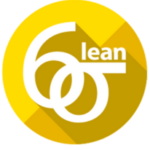OVERVIEW
Six Sigma Yellow Belt training serves as an introduction to the fundamental concepts, principles, and tools of Six Sigma. You will gain a basic understanding of the methodology, its purpose, and its application in process improvement and quality management. Yellow Belt training familiarizes you with the terminology and key techniques used in Six Sigma projects.
You will learn about concepts such as DMAIC (Define, Measure, Analyze, Improve, Control), process mapping, data collection, and basic statistical analysis. This training can still be valuable for entry-level positions, roles that involve process-oriented tasks, or as a stepping stone to further Six Sigma training and certifications.

What's Included in Certified Lean Six Sigma Yellow Belt
- 1. Tailor-made and personalized learning program according to current industry
- 2. Live Instructor-Led & Self-Paced Learning options
- 3. Schedule training sessions according to your calendar
- 4. Direct project coaching and support
- 5. Comprehensive curriculum curated by industry advisors
- 6. Dual Certification: UAE + UK (London)
- 7. Direct 24 hours service & support
What is Lean Six Sigma Certification?
A person with Lean Six Sigma Yellow Belt certification in UAE has problem-solving abilities. Someone may gain Green Belt, Black Belt or Master Black Belt certification. The higher certification one attains, the more is the ability to solve complex organizational problems. Six Sigma certification is a process of individual’s knowledge validation using a classification system, generally referred to as “Belts” ( Yellow Belt, Green Belt, Black Belt & Master Black Belt ) This verification test individual commands over six sigma methodology and tools. The belt classification shows the position these certified individuals would occupy in an organizational structure and job roles.
Yellow Belt Training & Certification is an introductory problem-solving course that gives you an overview of Lean Six Sigma. It’s the most practical, easy to understand way to start your Lean Six Sigma journey and start delivering results.
What do you do to get the Six Sigma Yellow Belt certificate?
Our Six Sigma Yellow Belt training consists of a number of components:
1. Training: In an intensive Six Sigma Yellow Belt training program you learn the background of Lean and Six Sigma and we put what we have learned into practice with different simulations.
2. Extra: With our Body of Knowledge and whitepapers you place what you have learned in a theoretical framework.
3. Follow-up: During the Six Sigma Yellow Belt training, you will receive an access code to an e-learning module. You can pass the substance again in an interactive way.
4. Exam: On the last training day you will make the (CLSSYB) Yellow Belt exam. If you succeed, you will immediately receive the official Certified Lean Six Sigma Yellow Belt certification.
Modules
1. What is Lean
2. Lean Principles
3. Evolution of Lean
4. Eight Types of Waste (MUDA)
5. Waste and Value
6. What is Six Sigma?
7. DMAIC Vs. DMADV
8. Lean Six Sigma (LSS)
9. Similarities of Lean and Six Sigma
10. Differences of Lean and Six Sigma
11. LSS Tools Overview
12. Limitations to LSS projects
1. Creative Thinking and Brainstorming
2. Generating Project Ideas
3. Affinity Diagram
4. Project Charter
5. Project Measures (Metrics) Incl. Yield, RTY, DPO, DPMO
6. Cost of Poor Quality (COPQ)
7. LSS and Cost
8. Process Definition
9. SIPOC
10. Voice of Customer (VOC)
11. Critical to Quality (CTQ)
1. C&E (Fishbone) Diagram
2. Pareto Chart
3. C&E Matrix (X-Y Diagram)
4. FMEA
5. Different types of Data
6. Population and Sampling
7. Stratification
8. Data Collection Plan
9. Measurement System Analysis (MSA)
10. Accuracy and Precision
11. Bias
12. Linearity
13. Stability
14. Repeatability & Reproducibility (G R&R)
15. Attribute MSA (KAPPA)
16. Different Types of Variation
17. Histogram
18. Normal Distribution and Normality
19. Run Chart
20. Individual Control Chart
1. Process Mapping Tools
2. SIPOC, Spaghetti Diagram, Process Flow Chart, etc.
3. Graphical Cause Validation Tools (Fishbone Diagram, 5 Whys, etc.
1. Improvement Strategy
2. 5S (Sort, Set in order, Shine, Standardise, Sustain)
3. Poka Yoke (Mistake Proofing)
4. Kaizen
1. Standardisation
2. Control Plan
3. Documentation
4. Training
5. Statistical Process Control
6. Before and After Analysis
7. Project Closure
| 1. Learn to define and understand quality concepts and their evolution. |
|---|
| 2. Learn the Six Sigma Certification and why it is necessary to sustain business improvement. |
|---|
| 3. Learn the explain the role of Six Sigma in customer service and continual improvement. |
| 4. Learn to apply and implement the Define, Measure, Analyze, Improve and Control problem solving methodology. |
| 5. Learn to Examine the statistical background supporting Six Sigma Yellow Belt projects. |
| 6. Learn to compare between the various tools usually used in a Six Sigma project. |
| 7. Learn how to deploy Six Sigma and assess organizational readiness to launch a successful Six Sigma project. |
| 1. Leaders and Executives |
|---|
| 2. Quality Auditors, Engineers & Supervisors |
| 3. Quality and Process Improvement Teams |
| 4. Continuous Improvement Professionals |
| 5. Healthcare Professionals |
| 6. Service Industry Professionals |
| 7. Project Managers |
| 8. Quality Analysts and Managers |
| 9. Front-Line Employees |
| 10. Entrepreneurs and Startups |
| 11. Manufacturing and Production Teams |
| Dual Certification: UAE + UK (London) |
|---|
| 1. Internationally Recognized Six Sigma Yellow Belt Certification |
|---|
| 2. Employers Can Verify Your Certification Using Our Validation Tool |
